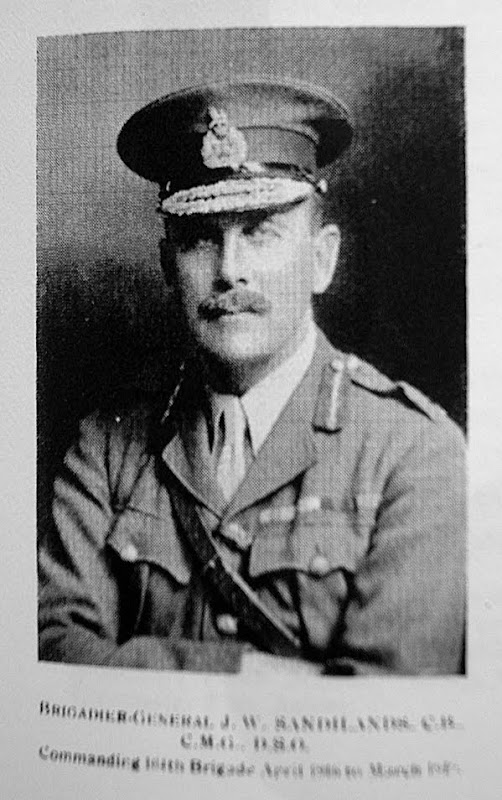Home » Durham Light Infantry
Category Archives: Durham Light Infantry
Can a veteran’s story be believed?
As the grandson of a veteran of the First World War I took my grandfather’s stories to be accurate to the letter – though how I visualised his antics as I grew up bore very little to the reality, but rather a boy’s perceptions from his surroundings, TV and books in the 1960s and 1970s.
As I study for an MA in British First World War studies the chance exists not only to entrench my research into his journey through the Machine Gun Corps and the fledgling RAF but to consider the accuracy of any veterran’s account – as the years pass their stories can be coloured by what they read and hear so that they may say what people expect to hear.
The opportunity may also exist to do some original research, even to be in touch with the relatives of those featured in his story.
Is it possible, for example, to put names to the faces in a set of photographs of the RAF cadets who were barracked at the Queen’s Hotel, Hastings in May and June 1918?
And where he marked the spot where he buried his mates Dick Piper and Harry Gartenfeld is it feasible to look for them or leave a permanent stone?
‘That’s nothing compared to Passchendaele”.
Fig.1. The dead and unidentifiable of Passchendaele, 1917
Reflecting on his training and service in the Machine Gun Corps during the First World War, veteran Jack Wilson MM commented on the regional news piece on TV which showed a soldier of the Durham Light Infantry in the Gulf before the first Iraq War to free Kuwait.
“You see these lovely rations they’re getting”, he said, adding, “and I look back at the stuff our lot were getting – it was terrible.”
He summed it up with in a sentence: ‘That’s nothing compared to Passchendaele”.
He described the food at the training camp in Grantham as “B.A.’ for “Bloody Awful”.
Related articles
- Slipping over the edge … (machineguncorps.com)
- First world war soldiers’ undelivered letters home come to light at last (theguardian.com)
All Quiet on the Western Front
This is the must read at the top of any list of TEN.
See the film produced in 1930 too.
Can anything beat it? Let’s see how Daniel Radcliffe performs in this role when the latest remake comes up for release in 2014 and some of the myths of the First World War are given another boast.
The reality?
Fear
boredom
Junior Officer’s who did their best and their utmost
Generals who could have done no differently and did look for different ways to end the war (innovations, new fronts)
Before you get swamped by the new titles that will inevitably feature over the next couple of years, what would you considered to be the must reads?
I’ve just started ‘Tommy’ by the late Richard Holmes and recently completed the diary of the lady nurse, Lady Dorothy (Doddles) Denbigh which, despite the proximity to death, was somewhat alleviated by frequent rides, and fine dining with royalty and generals.
The war to end all wars: the centenary of World War One (LINKS)
Please offer your suggestions for additional links
Commonwealth War Graves Commission
Department of Culture, Media & Sport
University of Birmingham WW1 : Beyond Blackadder
French Embassy Announcement on investment in remembering the La Grande Guerre
The War of the World Professor Niall Ferguson
Learning Resources for Teachers
Paul Read : Research, photos and battlefields
Love to Learn with Pearson Education
What is Europe? Free learning from The OU
Decorated ‘in the field’ with the Military Medal by Brigadier Sandilands
Fig.1 Brigadier-General J W Sandilands From The History of the 35th Division in the Great War. L-C H.M. Davson
Brigadier-Gneral Sandilands decorated Jack Wilson with the Military Medal – ‘in the field’ along with three others. He received the Military Medal. Jack described the scene as ‘a square’ with a table in the middle.
There are a couple of likely times for the week long stop in a pill-box without relief – around 11th October when the Steenbeck flooded, after the initial attack on Houthulst Forest when the heaven’s opened, or in November when once again the Broembeck was flooded. He describes the Steenbeck as a ‘lake of mud’ and to reach Egypt House at one time as requiring you to wade through ‘the puddle’.
Fig. 2. A studio photo taken soon after joining the Durham Light Infantry, March 1915 at Billy Wilson’s Photography Studio, Consett before transfer to the Machine Gun Corps or ‘Suicide Squad’
This picture used in the Consett local paper when Jack Wilson was awarded the Military Medal
Fig. 3. Clip from the Consett Gazette in late 1917
(This photograph from a faded original cutting from the paper originally kept by Jack’s mother Sarah Wilson nee Nixon)



